- Message center


Home of Transmission Repair
- Transmission parts
- Bulletin board
- Transmission repair
- Technical assistant
Popular articles

Probably every transmission repair specialist was keen on LEGO constructions or at least enjoyed making some minor things with their hands. Here's the game taken to a new level of creativity!

Modern auto industry is full of sophisticated drivetrain technologies which are supposed to make your driving experience even more pleasant and trouble-free. Despite a great abundance of sophisticated technical solutions, it is highly likely that very few people know a transmission solution operating like a manual CVT.

Over recent years engineers developed a lot of gear shifting solutions for different car brands, which may seem a bit unusual for oldtime drivers. In this article we will review the most peculiar gear stick technologies and provide video materials related to these technologies.

Only few people know about transmission concepts which were popular 70-90 years ago. For men of today, these gearboxes may seem very unusual and weird, but even now some gearboxes that date back to those years are quite competitive in comparison with modern transmissions.

Nowadays Extroid CVTs are commonly known as “toroidal” due to the fact that the working surface of driving and driven discs in this transmission has the form of a torus. Extroid CVT is not a V-belt transmission, but a friction drive CVT.

Tiptronic transmission: What is it and how does it work?
What is tiptronic. how it works. pros and cons of tiptronic transmission, tiptronic is a trade name of the manual gear shifting function (mode), which is implemented in the automatic transmissions. in the world of the automobile industry the name tiptronic is used to define automatic transmissions of a specific design and control method regardless of the actual developer and producer of the transmission., pros and cons of tiptronic.
Tiptronic mode has the following advantages:
- When driving on the asphalt road it is convenient to use a standard automatic transmission – just start the engine and drive. But when driving uphill or the road surface is slippery – a manual transmission is a better solution. Therefore, Tiptronic is a unique solution for any driving conditions.
- If you need to overtake a car, then the automatic transmission with the Tiptronic function will easily cope with this task. Previously, the manual transmission was a better solution for such purposes, because with standard automatic transmissions it was impossible to move instantly into the top gear. The transmission with the Tiptronic function has a special kick-down option, which ensures sharp increase of the engine RPM.
- With the help of the Tiptronic function it is possible to perform the engine braking, which is not allowed in conventional automatic transmissions.
- In winter, Tiptronic eliminates wheel slippage as the driver starts moving from the 2-nd gear. With Tiptronic driving on the iced road is not a problem.
- Off-road driving with the Tiptronic transmission will be an easy task, because after switching to the manual mode it is much easier for the driver to maneuver and drive round any road obstructions.
- Unlike manual transmissions, Tiptronic protects the engine from inaccurate gear shifting. If the driver hastily shifts gears, the engine and transmission won’t be affected.
- With regard to fuel consumption, the Tiptronic transmission is more fuel efficient than standard automatic transmissions, but at the same time Tiptronic is outperformed by the manual transmission at this parameter.
- If the driver does not resort to using the manual mode, then the “smart” software will switch the transmission to the automatic mode, i.e. after stopping at the traffic light the engine should not be started manually, the transmission control module will start it automatically.
Different manual gear shifting options in automatic transmissions
Nowadays, the option of manual gear shifting (under different labels) in automatic transmissions is implemented by many automatic transmission manufacturers, so let’s review the most popular solutions:
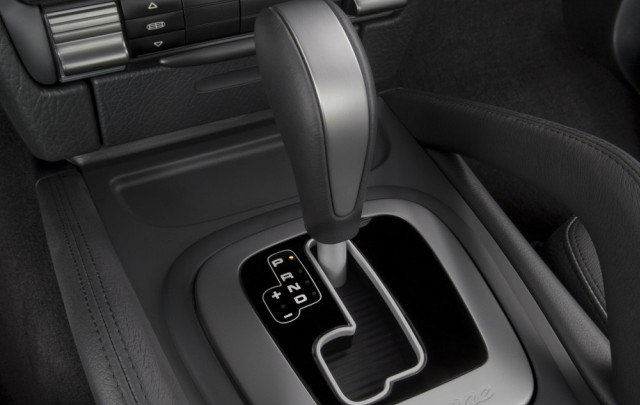
- Tiptronic is implemented in automatic transmissions installed in cars of Volkswagen Group (VW, Audi, Skoda, Seat, Porshe);
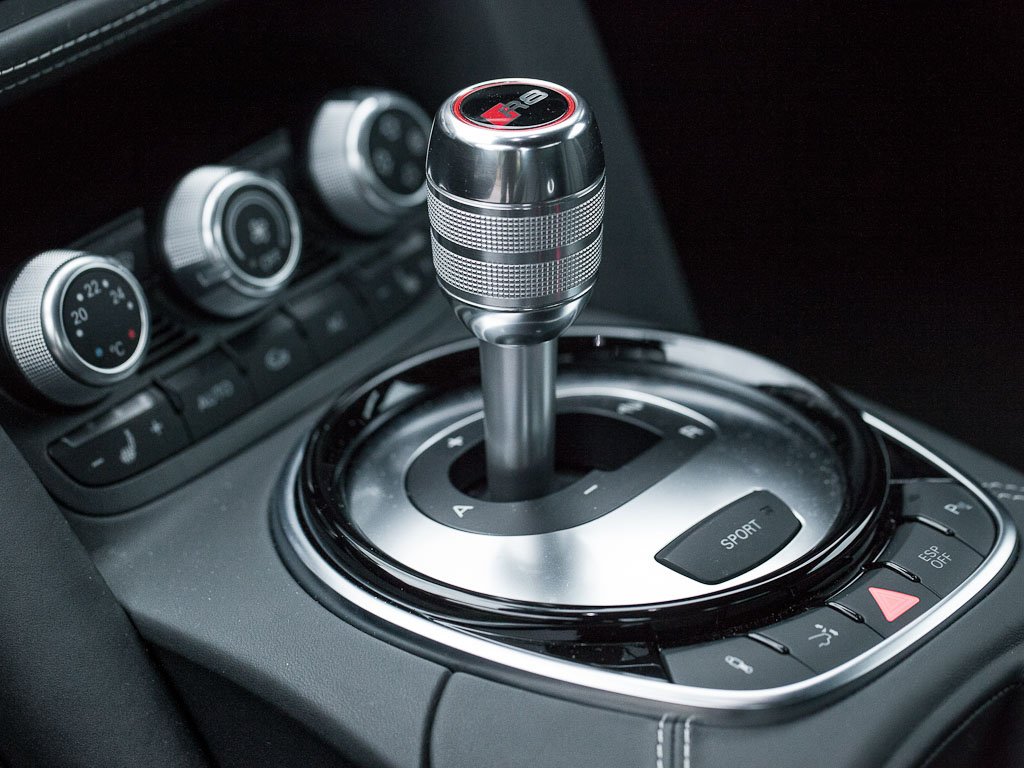
- S-tronic is implemented in DSG transmissions (for example, DQ250 (02E) DQ500 , DL501 (0B5) ), which are mainly installed in Audi and VW car models;
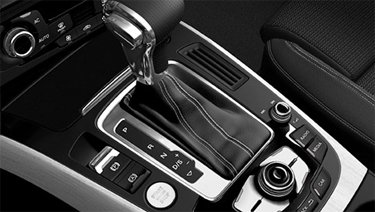
- Multitronic is implemented in CVT transmission 01J , which is installed in Audi car models (A4, A6, A8);

- Steptronic is implemented in automatic transmissions, which are installed in BMW car models;

- Easytronic option (developed by Opel and Luk) is implemented in DSG transmission, which is installed in Opel car models (Corsa, Vectra, Astra, Zafira, Meriva). Easytronic is the Opel trade name for a type of transaxle-based semi-automatic transmission or gearbox, as used in some Opel/Vauxhall cars. Easytronic is not a Tiptronic gearbox design; it does not have a torque converter. It is fundamentally a conventional manual transmission, with a single-plate dry clutch. The transmission is controlled by an electronic control unit (ECU).

- Tiptronic S is a modernized Tiptronic technology, which has the capacity to adjust to the driver’s driving style and allows driver to shift gears without switching to the manual mode. This solution was introduced in 2000 for the Porsche Boxster. In the Porsche Cayenne, the Tiptronic S was upgraded to six-speed.
In theory, the possibility of equipping any standard automatic transmission with the option of manual gear shifting does not depend on its specific design. This function can be added even in gearboxes without electronic control under the condition of implementation of required modifications. For a long time implementation of the Tiptronic function in automatic transmissions was impossible, because a rigid connection between the wheels of the car and the engine crankshaft in many old automatic transmissions was not implemented.
Principle of Tiptronic operation
Automatic transmissions with the Tiptronic function can operate in two modes: full automatic mode and manual control mode (Tiptronic). When the Tiptronic function is not selected, the transmission operates like a standard automatic transmission with ECM (Electronic Control Module) responsible for shifting gears. For the Tiptronic mode engineers offered the operation scheme in which the driver at any moment can decide what gear should be engaged like it is done in manual transmissions. Switching to the manual mode and further control in automatic transmissions with a Tiptronic function is implemented by moving the shift lever into a second operating plane of the shift gate marked with symbols “+” for upshifting and “-“ for downshifting. The Tiptronic structure is carried out with application of a torque converter like in standard automatic transmissions. The Tiptronic shifting function is implemented with the help of the special software installed in the electronic control module (ECM).
In some car models the transmission is switched to the manual mode by simply pressing steering wheel-mounted selectors in the form of push-buttons or so-called paddles (similar to the control layout in race cars). In some cars paddles are activated after pressing a special button located on the steering wheel. After that the transmission switches to the manual mode and the selector lever is not engaged. Selected gears are rendered on the car instrument panel. When the manual mode is no longer needed the transmission again switches to the automatic mode after a particular period of time counted from the moment when the driver stops using paddles for shifting gears.
The Multitronic system, implemented in CVT transmission 01J, uses fixed gear ratios implemented in the CVT. Despite the fact that the manual mode implies that the driver is in charge of gear shifting, the transmission ECM still controls actions of the driver to avoid any critical mistakes – such as damage of the transmission or engine in case of inaccurate gear shifting.
More videos related to the Tiptronic technology
Despite all undeniable advantages of the Tiptronic mode in automatic transmissions, this technical solution has few soft spots. For example, introduction of an additional function led to the transmission weight increase. Also, some drivers noticed that the gear shifting is performed with some delays (no matter what mode is engaged). Such remarks occurred at speeds up to 100km/h. Delays ranged from 0.1 up to 0.7 seconds. However, in latest versions of automatic transmissions this drawback is almost eliminated, as shifting is performed with a minimum pause.
All in all, automatic transmissions with the mode of manual gear shifting (Tiptronic) strikes the perfect balance between automatic and manual transmissions, thus this solution may be considered by drivers who want to combine the comfort of using an automatic transmission and an aggressive driving style with high speeds, overtaking, and off-road driving. Ardent admirers of manual transmissions also may try to use this option, because you can still be in charge of the gear shifting operations as well as relax and drive the car with no need for keeping an eye on engine RPM and gear shifting, that cannot be done when driving a car with a standard manual gearbox.
- automatic transmission
- DSG transmission
- Multitronic
- Tiptronic S

Stay Connected
We are social, become a member, legal information.
Terms and Conditions
Privacy policy
Copyright 2015-2023 © Go4trans. All Rights Reserved.
Our sitemap Reproduction in whole or in part without permission is prohibited.
- 6-7 speed Multitronic Automatic Gearboxes
- 6 speed DSG Automatic Gearboxes
- 7 speed DSG Automatic Gearboxes
- 7 speed STRONIC DSG Automatic Gearboxes
- 8 speed Multitronic Automatic Gearboxes
- Case study 1
- Case study 2
- Case study 3
- Common transmission problems
- Did you know
- Driving best practices
- That’s a myth
- Company news

Everything You Need to Know About the Tiptronic Gearbox
Many car brands today boast some form of “tiptronic” transmission. But what does this word mean? Is it just another automotive buzzword designed to confuse and annoy us? Or, is it a real and tangible thing that cars use and benefit from? Tiptronic is a very real technology and it has been a significant step forward for those who wanted to get the best of both worlds when it comes to their vehicle’s transmission. In today’s blog, we will understand what a tiptronic gearbox is, how it works, how it might benefit a car and driver, and more.
/ What is a Tiptronic Gearbox?
Put simply, a tiptronic gearbox is a special kind of automatic transmission that also has the ability to allow the driver the option to shift gears manually if they would like. It is designed as a gearbox to give drivers more control over their on-road experience. Many drivers like the tiptronic gearbox especially when negotiating uphill and downhill situations where being able to shift gears yourself can offer better control, traction and torque. The system is also popular in Europe where for years the vast majority of drivers have preferred manual cars. Even as automatic cars become more common, European drivers (and Japanese drivers, too) feel like the tiptronic transmission gives them the best of both worlds and so opt for this system when it’s available to them. Different companies tend to use different names for their tiptronic systems, chiefly as a way to integrate this system as a part of their brand.
/ How Do Tiptronic Gearboxes Work?
For the most part, a tiptronic gearbox is much like that of a regular automatic transmission. When you look at the gearshift, it looks different from a regular automatic, and shifts between “N” for Neutral, “R” for Reverse and “D” for Drive, of course. The main difference in the tiptronic gearbox function is found within its ability to switch from that same regular automatic shifting mode to an automatic one. Usually at the bottom of the gear shifter channel, there is a separate section you can push the gear shifter into. This action of pushing the shifter left or right is typically what shifts the car from regular automatic mood into tiptronic mode. Once the car is in tiptronic mode, it is up to the driver to make the necessary shifts back up or down. This is done usually by nudging the shifter either up or down, or left to right, depending on the specific setup.
/ What are the Benefits of Having a Tiptronic Gearbox?
With a tiptronic gearbox, you first get all the same main benefits that you’d expect from an automatic transmission:
- Ease of use
- Strong resale value
The added benefit of having a tiptronic gearbox is that you have the option to shift to manual as and when you want. Where the more die-hard automatic fan doesn’t like to switch to any form of manual transmission, they don’t have to activate tiptronic mode. Those who do miss the activity and sensation of manual shifting, however, can gain that by activating tiptronic mode. They may do it for all sorts of reasons:
- First, manual shifting reduces driver boredom. Many drivers remark on how soporific and dull driving can be when the car is entirely automatic, especially on longer journeys. Having to think about rpms, torque and having sufficient power and control to get up and down hill slopes, and to safely navigate corners is part of what makes driving fun and helps to keep drivers alert.
- Second, manual mode does provide more control in difficult environments like on steep inclines. When heading up or down a slope, the driver knows to quickly drop gears, but an automatic may take longer to respond, resulting in a less-than-ideal or even less safe performance on those slopes. Tiptronic puts the control back into the hands of drivers.
- Finally, it can make their car feel more like a sports car. The tiptronic transmission usually comes with wheel-mounted paddle shifters, which is a very sportscar-like feature. It adds an air of dynamism and fun to the car that a traditional automatic tends to lack.
/ Is There a Downside to a Tiptronic Gearbox?
Like other automatic transmissions, tiptronic systems are more complex and thus in general more expensive to maintain and repair. They tend to need more maintenance, not less, than a manual car. Replacing the tiptronic gearbox and transmission could easily cost you £2500 or £3000 plus labour costs. It’s an expensive component to go wrong, but when it’s well maintained it will likely last a long time and won’t fail prematurely. Some drivers have pointed to another downside, which is that if and when the driver doesn’t shift gears by hand after a given amount of time, the tiptronic system just turns itself off and it goes back to automatic transmission. If you were deliberately trying to keep it in a certain gear while driving for some reason known to you, then that could be quite tiresome. Once it reverts, you have to manually reactivate the tiptronic feature.
/ Conclusion: Is Tiptronic Better Than a Regular Automatic?
If you drive a car and would like to have a choice in your transmission type, then the tiptronic transmission is a perfect choice. It’s also good if you have a shared family car with at least two family members who disagree on the merits of manual and automatic transmission. The tiptronic allows each to experience what they like the most. This versatility and adaptability are the main benefits that tiptronic has over a regular automatic transmission. At the moment, however, they are a more intricate and complex transmission to maintain and/or replace, so the difficulty of cost will always hang over the tiptronic gearbox. For many, however, it’s worth paying the price.
Write a Comment Cancel reply
- About Total 911
- Advertise With Us
- Subscription Offers
- Back Issues
Total 911 News
Everything you need to know about tiptronic.
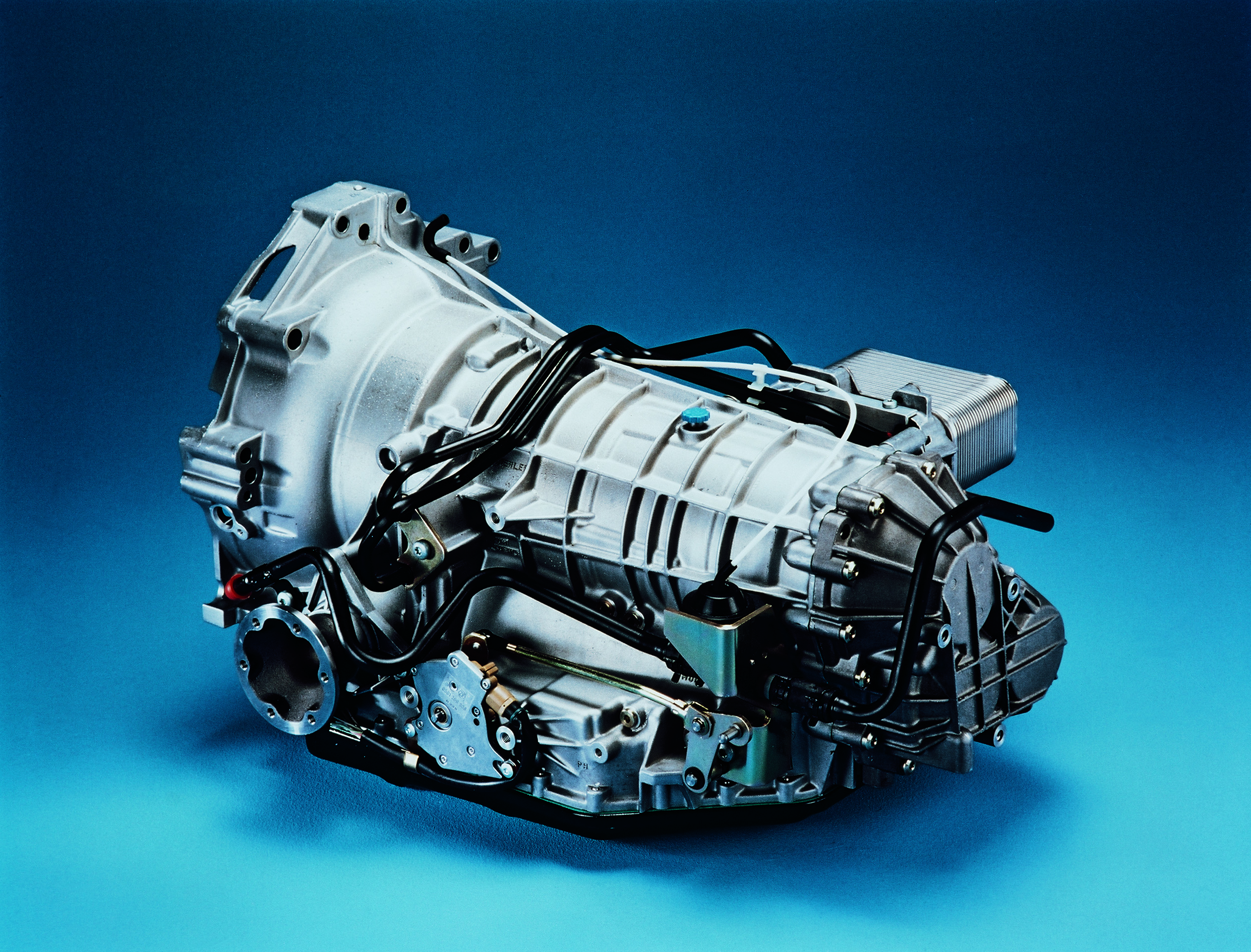
A trawl through automotive magazines and websites will quickly find often vociferous debates about the merits of manual versus automatic gearboxes, and nowhere is that more true than in the world of sports cars. Naturally, the 911 hasn’t been immune from such debates, fuelled in some areas by Porsche’s decision to equip some models only with the PDK transmission (introduced with the 997.2 generation), the 997 Turbo S and 991.1 GT3 being cases in point.
That’s a more recent issue, though, because our focus here is on the transmission that introduced a proper automatic (as opposed to the Sportomatic launched in 1967 – a manual ‘box with the clutch operated via a micro-switch in the gear lever) to the Neunelfer for the first time. Tiptronic debuted in a model that was already marking a generational shift for the 911 – the 964.
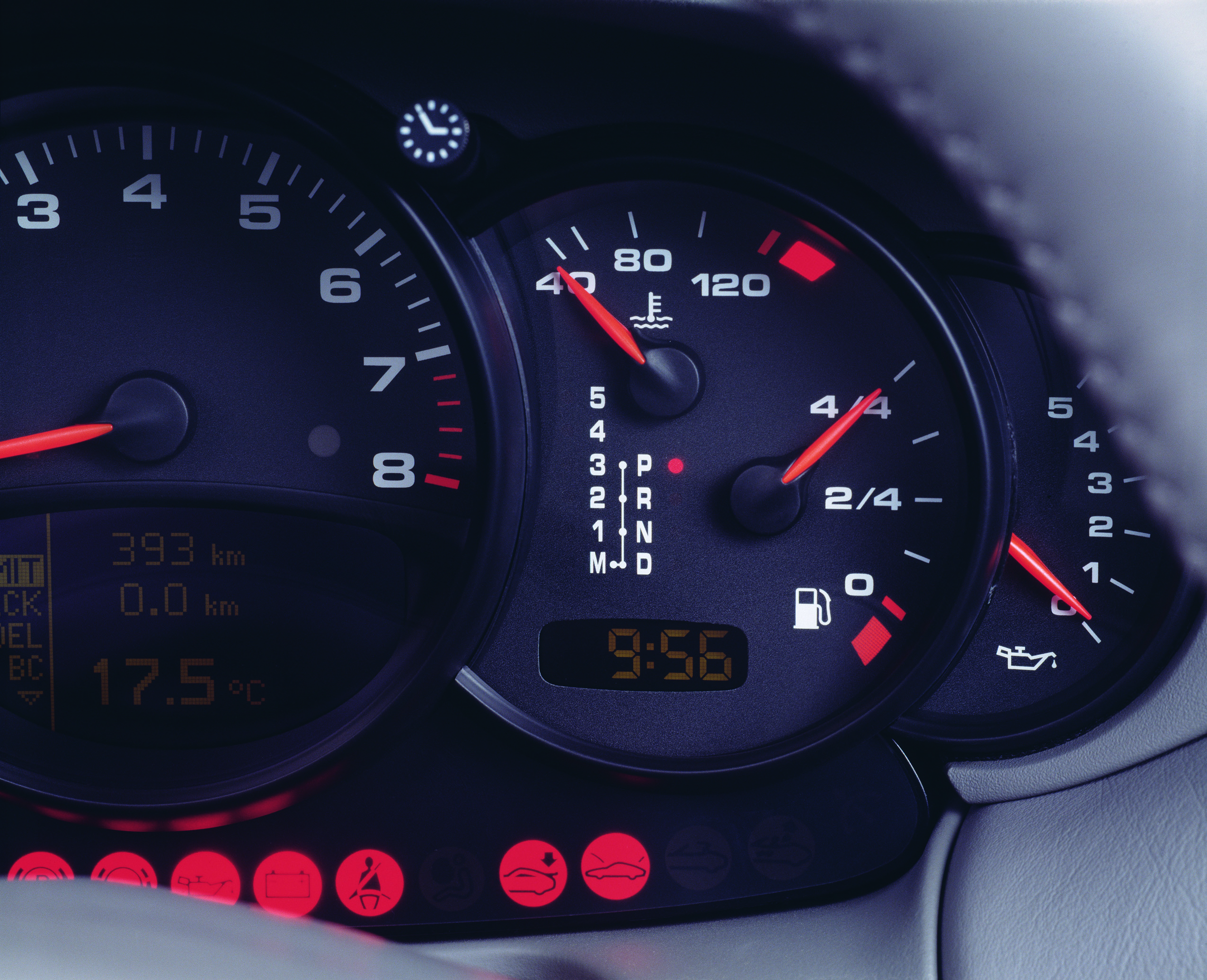
HISTORY AND TECH
Described as ‘revolutionary’ by Porsche at the time, the Tiptronic gearbox first introduced in 1988 was a four-speed electro-hydraulically controlled unit that was developed in conjunction with ZF and Bosch. A conventional torque convertor transmission, it appeared to offer the best of both worlds: left in ‘Drive’ it would shift ratios by itself like any other automatic, but flicking the selector lever to one side allowed the driver to indulge in manual shifting by pushing the lever forward to change up or backward for down-changes.
A display in the speedometer showed which mode/gear was selected. Yes, being just a four-speeder was a limitation and meant the spread of ratios was wider than was truly ideal, but Porsche countered this to some extent by equipping the Tiptronic ‘box with an ‘Intelligent Shift Programme’ . Controlled by an ECU that monitored inputs such as vehicle and engine speed, throttle position and lateral/longitudinal acceleration, it could pick from one of five shift programmes that adjusted gear change points according to whether the driver wanted to cruise or extract maximum performance. And this electronic control brought other benefits, including the avoidance of over-revving by automatically upshifting at maximum revs, and preventing gear changes at inopportune moments, such as when cornering.
For our full guide to the Tiptronic gearbox, pick up your copy of Total 911 issue 202 in store today. Alternatively, order your copy online for home delivery , or download it straight to your digital device now.
- Share on Facebook
- Share Twitter
- Plus one on Google Plus
- Save on Stumble Upon
- Pin on Pintrest
- Share on Reddit
Comments (0)
- Drives and Tests
- Expert-Tested Gear
- What's My Car Worth?
Shift This: A History of Porsche’s Sportomatic, Tiptronic, and PDK Transmissions

As a company, Porsche consistently finds itself caught in a tug-of-war between honoring its heritage and placing its sports cars at the bleeding edge of progress. Take the 911: Its engine is still in the wrong place and a Porschephile from the ’70s, transported directly to 2013, could still recognize today’s model as a neunelf at a single glance. Yet Porsche has continued to innovate and transform its icon in other areas, and through the 911’s many iterations the car has become more luxurious, safer, more powerful, better handling. But alongside exorcising the 911’s dynamic demons, offering leather-lined cup holders, and essentially perfecting the flat-six engine, Porsche’s march of progress is also made clear through its automatic-transmission developments.
With its quintessentially space-age name, Sportomatic provided a nifty answer to a question seemingly no one was asking in the mid-1960s. It was an era when sports cars had shift-for-yourself transmissions—end of story—but the Germans saw a need to help in those times when even the hardest-core sports-car enthusiast grew weary of clutching in and out through heavy traffic.
Curiously, Porsche described Sportomatic as an “automatic” transmission, even though it had no fully automatic setting. A modified four-speed 911 gearbox, Sportomatic was essentially a manual with a vacuum-operated single-disc dry clutch. A torque converter replaced the flywheel and existed both to smooth the transmission’s electro-mechanical shifts and to allow the car to remain stationary with the clutch engaged. When a driver grabbed the shift lever, the clutch would disengage, re-engaging as soon as one’s hand was removed from the stick. To change gears, the driver needed only to move the lever to the desired gate and let go of the knob.

The “gears” were labeled L, D, D3, and D4, and although Porsche suggested using L only for steep grades, it was, essentially, first gear. (We found in a 1971 test that using L helped acceleration.) Gears D, D3, and D4 were really the transmission’s second, third, and fourth speeds, and there was even an automatic-like “park” setting enabled by a pawl that both engaged and locked a countershaft gear.
Sportomatic-equipped 911s were, as you might expect, somewhat quirky: As on other early 911s, there was a secondary hand throttle between the front seats to adjust the engine’s idle speed to prevent random stalls, and we found in our contemporary test that you could easily overrev the engine by accidentally touching the shift lever or not lifting from the throttle during an intentional shift event. An innovative yet flawed first step, Sportomatic’s last gasp wasn’t heard until 1980. The technology received only one update along the way, in 1975, when Porsche stripped it of one forward gear due to the torquier nature of the 911’s more-flexible 2.7-liter flat-six.
This 1991 911 Carrera 2 is equipped with Tiptronic—can’t you tell?
Following the demise of Sportomatic, a small cadre of Porsche engineers sought to continue development of automated manual transmissions over the next decade. But those efforts were largely ignored in favor of Porsche’s early dual-clutch PDK program for racing and, well, the general lack of interest in Sportomatic. Enter the Tiptronic. When developing the 964 911 , Porsche turned to ZF to supply a fully automatic transmission. But an average slushbox just wouldn’t do, and so Porsche cooked up a unique protocol for the transmission’s brain. Monitoring throttle position and movement, engine and road speed, ABS activation, and fuel-delivery sensors, the four-speed automatic “adapted” to a driver’s style by choosing among five available shift maps depending on the data it received.

Critically, Porsche’s algorithm also included a manual override, accessible via a secondary up/down gate for the shift lever or by sliding the lever directly to positions 1, 2, 3, or D. Tiptronic was hardly perfect—it automatically upshifted before redline when using the shift gate, it couldn’t blip the throttle on downshifts, and it debuted in the U.S. with a $2950 price tag—but it was an improvement over Sportomatic. The shift lever’s push forward for upshifts, pull backwards for downshifts design was another hiccup; the PDK transmission in Porsche’s race cars used the opposite—and in our opinion, better—orientation, with forward taps actuating downshifts and lever pulls commanding upshifts. Later, Tiptronic-equipped cars inherited confusing steering-wheel-mounted thumb switches for up- and downshifts that survive to this day on some automatic Porsche models. Paddles are better, and it seems the company finally agrees, as we have heard that the thumb switches soon will go the way of Sportomatic.
- Instrumented Test: 2014 Porsche Cayman S PDK Automatic
- Instrumented Test: 2014 Porsche 911 GT3
- Tech Dept.: A Tale of Two Seven-Speeds, Manual and PDK
Don’t be fooled by that introduction year for the production PDK transmission—the super-quick-shifting dual-clutch automatic has been in Porsche’s parts bin for more than 30 years. PDK stands for Porsche Doppelkupplungsgetriebe , or Porsche “dual-clutch transmission.” Incorporating two concentric shafts, one for even gears and the other for odd gears, and each driven by its own clutch, the transmission’s key appeal to Porsche’s race maestros was that it starts to engage the next gear as soon as the clutch on the previous gear’s shaft starts to disengage, allowing a continuous flow of engine power and keeping the firm’s turbocharged race cars in the boost. It first appeared in a testing capacity as a five-speed in the 956 race car in 1983 before later migrating to the 962 (pictured above), in which it won its first race at Monza in 1986.
The transmission was a complicated monster. The 962 race cars had a clutch pedal for launching the car from rest; a complex array of electrohydraulic actuators handled shifting and clutching duties once underway. Drivers expressed frustration at sequential shifting—so, only being able to move up and down one gear at a time—but they could preselect other gears using a steering-wheel switch. At the time, driving with PDK was just as mind-consuming as operating a manual.

Besides requiring a learning curve, PDK was only reliable in the sense that it would reliably explode every so often, chucking shafts, gears, actuators, and the like all over the racetrack. It’s said that each time Porsche tracked down a problem and fixed it, something new went wrong. This character flaw ultimately delayed its deployment in a production car for a number of decades, although that’s not to say Porsche didn’t try and put the PDK in customers’ hands before then. There were several attempts, from a test fitment to a 924S to a production-intent integration of PDK into the 944 Turbo. A 968 equipped with PDK was nearly readied for sale before ZF’s Tiptronic was called in to pinch hit, and a stillborn successor to the 959 (dubbed 969) with PDK was killed a year before going on sale for 1991. Showroom availability of the Doppelkupplungsgetriebe wouldn’t happen until the mid-cycle refresh plans for the 2005 911, Boxster, and Cayman, this time featuring seven forward gears. The ’box was subsequently added to the Panamera and later to the 918 Spyder (that specific unit is pictured above), adapted into the seven-speed manual offered in today’s 911, and offered as the sole transmission in the 2014 911 GT3 . It continues to impress with its lightning-quick shifts and near-telepathic rev-matching ability.

.css-1updq97:before{background-color:#000000;color:#fff;left:0;width:50%;border:0 solid transparent;bottom:48%;height:0.125rem;content:'';position:absolute;z-index:-2000000;} News .css-1e2ieb7:after{background-color:#000000;color:#fff;right:0;width:50%;border:0 solid transparent;bottom:48%;height:0.125rem;content:'';position:absolute;z-index:-2000000;}

Toyota Dominates Longest-Lasting Cars List

2025 Toyota Sequoia Adds Luxurious 1794 Edition

Spied: Hyundai's New EV SUV Looks Like the Concept

Toyota Recalls 33K Cars for Sticker Issue

Ford Issues Stop-Drive For Last Takata Airbag Cars

2025 Lincoln Navigator Teased, Debuting August 15

Toyota Tundra's New Rally Package Is Baja-Inspired

2025 Kia K4 Costs $23,145, $2000 More Than Forte

Bridgestone Reveals Dueler Ascent All-Terrain Tire

2025 Nissan Kicks Adds AWD, Starts at $23,220
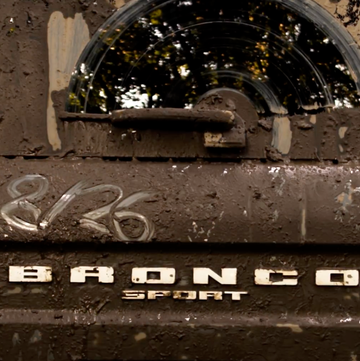
2025 Ford Bronco Sport Sasquatch Package Teased
- Available Cars
- Testimonials

- Maintenance Tips
Unlocking The Mechanism of Tiptronic Transmission

If you are a car enthusiast, you must have watched the Fast and Furious series. You may not have liked the movies but your heart was sure to race like the racing cars every time the camera pans on an actor jumping on the clutch and shifting a gear. Many people want to enjoy the adrenaline rush of the gear-shifting action but not all of them are willing to do it at the cost of the advantages of an automatic transmission. Tiptronic transmission can solve this dilemma by offering the benefits of both worlds!
Automobile enthusiasts will literally divide into two groups when it comes to choosing between automatic and manual transmissions . Both types have their zealous supporters but there is no denying that each one has some unique perks that the other type cannot deliver. Tiptronic transmission can be the bridge between both types. Let’s find out what is Tiptronic , how it works, and its edge over the automatic transmission.
What Is Tiptronic Transmission?
Packard and Chrysler were the first automakers to experiment with the concept of a Tiptronic shift in the late 1930s. They developed a semi-automatic mechanism that could automatically move the clutch during gear shifts.
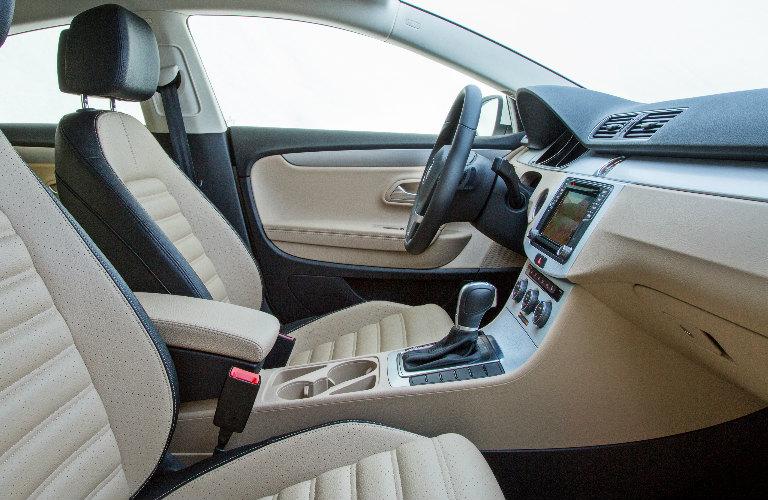
In the modern world, the Volkswagen-Audi group takes the Tiptronic shift as a brand-specific automatic transmission. You will see this variation in some luxury, first-class brands such as BMW , Mercedes-Benz , Audi, Porsche , and as well as in some standard vehicles such as Citroen Sensodrive, Honda iShift, Chrysler AutoStick, and more.
Definition of tiptronic transmission
This particular type is similar to an automatic transmission but has an option for the driver to shift the gears manually. It allows you to upshift and downshift in that mode by using the gear lever or the paddles behind the steering wheel. It was developed with the idea of extracting the best performance from a vehicle.
In contrast to semi-automatics, the technology in Tiptronic transmission utilizes a torque converter instead of a clutch. It also incorporates some manual functions in an automatic mechanism.
Benefits of a tiptronic shift
A Tiptronic gearbox allows the driver to manually handle the nuances of two options – upshift and downshift. After overriding the automatic mode with the manual option, the driver can make the shifting decisions. So, it is quite possible to enhance the braking output with a deliberate downshift or increase the acceleration by using the upshift while also enjoying the traditional auto transmission features. The unique benefits of Tiptronic technology are:
- Gear controls can be performed by both the driver and the car’s computer system (ECU), which is suitable for both novice and experienced drivers.
- Manual navigation of upshift and downshift allows a driver to have more control over the gear-shifting action. To ensure safety, there’s a built-in safeguard to revert to automatic control if the driver overlooks the RPM redline.
- Just like navigating an automatic transmission, it does not require much skill to operate a Tiptronic transmission . So, even beginner drivers can drive a car with this mechanism.
What’s the Working Principle of a Tiptronic Transmission?
The working mechanism of this system may seem complex because it makes use of the techniques of both transmission types. It’s a no-brainer to tell that it has two modes – automatic transmission and manual shifting.
- The Automatic Mode – The car’s ECU controls the entire transmission system, requiring the driver to do nothing more than handle the brake and accelerator. This mode is suitable for amateur drivers and when you are driving in a city. It will offer hassle-free navigation through all the traffic.
- The Manual Mode – It allows the driver to take control of the transmission, of the shifting of gears to be precise. There are steering-mounted pedals or a gear knob to make the switching of modes. When you use it, the internal transmission actuators change the gear to either upshift or downshift position.
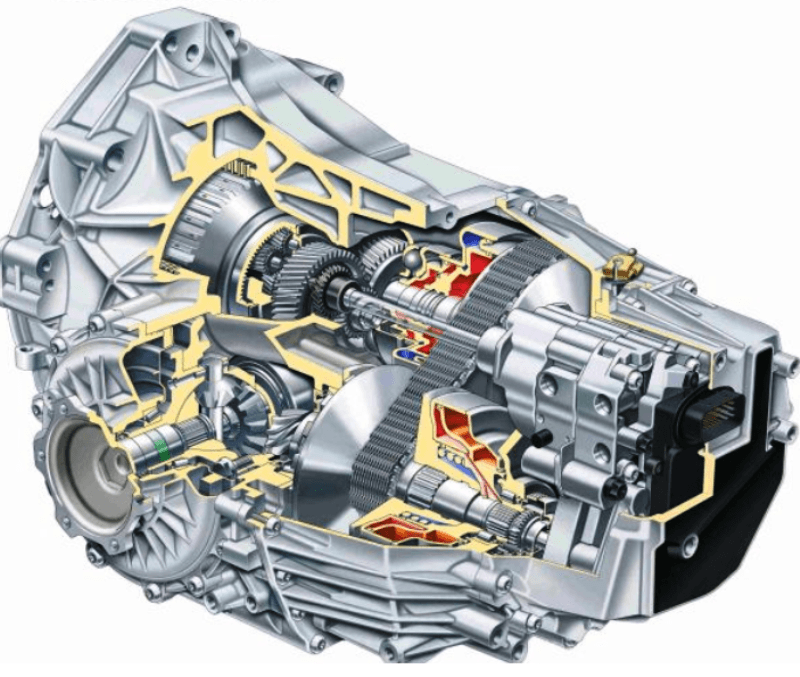
The ECU still retains much of the control (for safety purposes, of course) when you switch to the manual mode. For example, Audi’s Tiptronic transmission keeps shifting from the first to the second gear automatically during manual operation. It’s also evident from the safety measures performed by the vehicle’s central computer system. Most of the models featuring this transmission have inbuilt protections for high and low RPMs.
If the RPM crosses the maximum limit, the ECU swoops in to correct the gear shifting. Similarly, it performs a downshift when the RPM crosses the lowest limit. Many modern cars feature the Tiptronic S version of this transmission that automatically switches into the automatic mode if the drive gives no input within 8 seconds. All of these features are standard safety measures that prevent a failure of the engine.
- How to Do a Burnout in an Auto Car
- The Working Principle of a Manual Transmission
Watch the video to understand more about the mechanism of a Tiptronic transmission:
The Difference between Tiptronic and Automatic Transmission
Tiptronic is a kind of automatic transmission but it has some differences from a standard automatic system.
A Tiptronic system gives the drivers the freedom to choose how they want to drive. They can enjoy the hassle-free and easy driving of automatic navigation and the thrill of shifting gears in the manual transmission. Although it allows speeding up or slowing down, the ECU always oversees whether the RPM crosses the danger limits. It takes control if anything goes wrong or the driver does not use the shifting for a specific period. On the contrary, the automatic transmission is always in control of gear shifting and RPM.
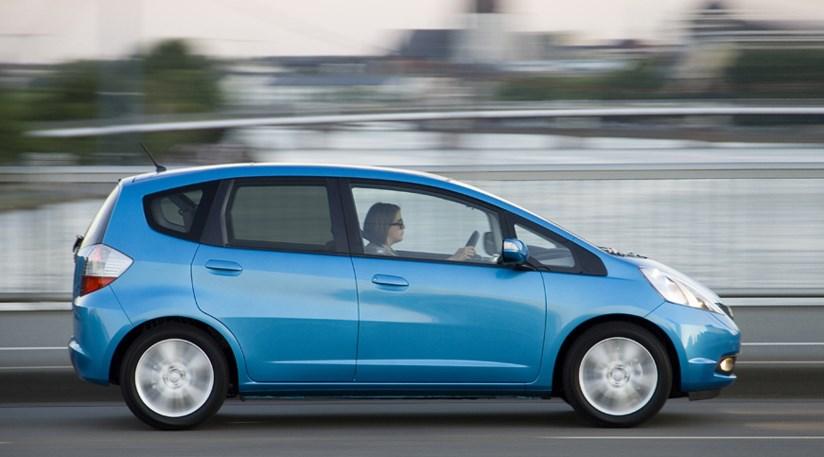
There are various advanced versions of Tiptronic transmission . For example, the Porsche Cayenne has an 8-speed Tiptronic S version that learns the driver’s behavior and acts in accordance, according to the manufacturer. Many modern cars have advanced versions of the automatic transmission but none of them has this feature.
Both the transmissions are similar in the sense that they are easy to operate. Even a new driver can operate and make routine trips across city areas.
A Tiptronic transmission hands down a driver the best of both auto and manual shifts. You can shift gears without pressing a clutch and stay worry-free because of the built-in safety features. There is almost zero possibility of making a driving error while running a car with a Tiptronic system.

- Cash for Cars
- Cash for Trucks
- Cash for SUVs
- Used Auto Parts
- Salvage Yard
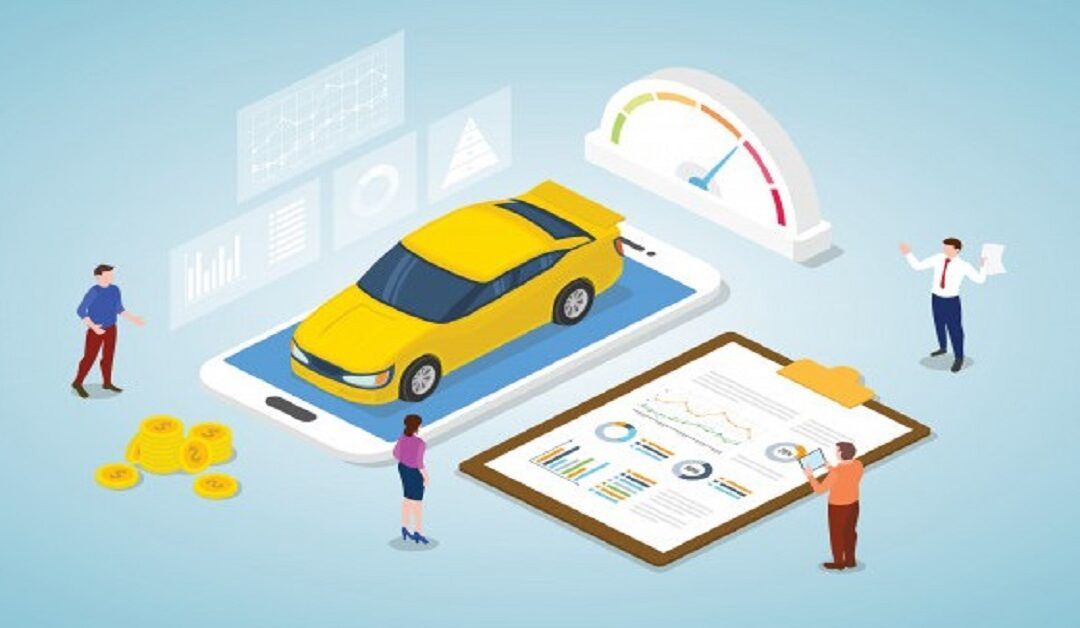
Tiptronic Transmission in Cars – The Good and The Bad
Written by Acres Cash for Cars on November 17, 2021 . Posted in Car , Car Parts .
Tiptronic transmission, also known as ‘manumatic’ transmission, is the perfect balance between manual and automatic transmission gear systems in vehicles. It basically is an automatic gearbox with the ability to manually change gears. Commonly, the gear stick can be moved through a series of + and – signs, denoting each setting. In place of a clutch, Tiptronic transmission uses a torque converter. It offers a driver the option to override the computer-driven gear shifting system and choose to do it manually, without hustle.
On the other hand, to combat the few concerns, all modern-day Tiptronic cars are equipped with safety measures to make sure that accidents do not take place if, say, the driver accidentally shifted to Tiptronic and was at risk of harming himself, others, or his car.
How Is Tiptronic Transmission Safe?
As mentioned above, extra care has been taken to ensure the utmost safety when it comes to Tiptronic transmission mode. Some of these include the inability to rev the engine more than a certain limit, without changing gears accordingly. Not only does this help the car from overworking itself and getting exposed to damage, but it also ascertains that the driver cannot use the manual gears recklessly.
If the system detects inappropriate revving or extra pressure being put on the engine, it will shift back to automatic mode and save the driver from potential accidents. These check-in features make Tiptronic transmission safe and more reliable than the other two alternatives, providing a ‘best of both worlds’ scenario.
Common Problems in Tiptronic Transmission
Although this system is usually the safest and most reliable there have been some customer complaints that point to a few issues.
- Gear Shifting Problem: Some people reported that the gears were not as smooth as they were supposed to be, with hard 1st and 2nd gear shifts, and turbulent 3rd and 4th gear shifts.
- Solenoid N89 Issue: The network of gears is made up of solenoids, with only one separating the 1st and 4th from each other. This one is called N89 and in the reports of it getting stuck, the car suddenly shifted to the 1st gear and rapidly decelerated without prior warning to the driver.
- Transmission Shudder: This is the phenomenon that takes place when a torque converter stops working or gets faulty. A rattle is heard and it is difficult to get the car out of the first gear.
- Some other problems arise only because the power a Tiptronic transmission engine operates at, is very similar to an automatic transmission and it requires the same heavy-duty components in the machine to cater to that kind of power. These may include peculiar noises coming from the hood, a delay in gear change, or transmission overheating.
The Better Picture:
Now, let’s talk about what advantages of Tiptronic transmission set it apart from the rest.
- Benefits of Both Automatic and Manual Transmission: It offers the duality of being totally in control, or completely relaxed, depending on the kind of road you are driving on, e.g., uphill, downhill, smooth, bumpy, etc. The driver gets to decide what direction he wants to steer the car.
- Overtaking Easier: With the kick-down, Tiptronic transmission allows you to instantly shift to a higher gear and increase speed if you are stuck behind an annoying driver who just wouldn’t speed up.
- Engine Braking: This is a feature that is not present in automatic transmission vehicles.
- Wheel Slippage or Spin Avoided: With the added layers of safety precautions, Tiptronic transmission saves a driver from slipping on icy or slippery roads, as well as from spinning out of control.
- Off-Road Easier: On difficult roads and through obstacles, a driver can easily make their way out using manual gear-changing mode and go back to a relaxed drive after it’s over.
- Fuel-Efficient: Tiptronic Transmission is known for consuming less fuel and being lighter on the pockets than standard automatic transmission.
- Long-Distance Travel: The pain of having to constantly change gears is relieved by the smooth drive of a Tiptronic transmission car. Over long distances, the automatic gear features make it easier for the driver and demand less legwork.
With its overall features and flaws, Tiptronic transmission can easily be placed at the top of the game, as is evident by the rising number of vehicles with this type of transmission installed. Surely, it has proven itself to be reliable, cost-effective, and easy.
If you have a junk car that has been lying in your backyard for years, and now you want to make some good money from it, you can sell your car online at Acres Cash for Cars. We provide free towing service from your backyard to our junkyard and give you an amazing price for your old junk car .
Leave a Reply Cancel reply
Your email address will not be published. Required fields are marked *
Save my name, email, and website in this browser for the next time I comment.
Post Comment

What is Tiptronic? (Detailed Explanation)
When it comes to driving, most people tend to have a preference for either automatic transmission (letting a car shift gears without you having to do it yourself) or manual transmission (manually changing the gears).
Some people think the automatic transmission is easier because then you can focus on the road rather than focusing on when you should shift gear. Others prefer the feeling of being able to speed up with the manual-changing gear shifts. But what if you could have the best of both worlds? The Tiptronic transmission allows you to do that.
Carry on reading to find out what the Tiptronic transmission is and how it works!
Table of Contents
What is the Tiptronic transmission?
Tiptronic is essentially a type of automatic transmission car that has a manual gear-shifting mode. This means it is a car that has developed into a dual transmission system – where the car is naturally supposed to be an automatic transmission, but the driver has the option to shift the gears manually.
It does this with a gear lever behind the steering wheel, or with a second gear panel to the right of the original gear stick plate on an automatic car. This type of gear lever differs from semi-automatic cars because it uses a torque converter instead of a clutch.
How does the Tiptronic transmission work?
A car with a Tiptronic transmission still has an automatic gearbox that will shift gears for you. However, to put it into Tiptronic mode, you just have to switch the gear stick to the Tiptronic option, and then you are in full control of the gears.
The Tiptronic option will look different in different cars, but the standard is the ‘+’ and ‘-’ symbols, found on a second operating plane where the gearstick is. The ‘+’ stands for ‘upshift’, which you would push the lever forward to do, and the ‘-’ stands for ‘downshift’ where you would pull the lever back. In the Tiptronic manual mode, gear shifting must be done in order of the gears (so you can’t shift from 1st gear to 3rd gear, for example).
Most of the cars that use a Tiptronic transmission will still automatically make some gear shifts to protect the engine, even when you are in manual mode. An example of this is Audi cars, which have a five-speed Tiptronic transmission. It will automatically do the upshifts from first gear to second gear, and second gear to third gear, when moving off from a stopped position.
The transmission will then wait for the driver to manually change to fourth gear or fifth gear – although it still might do it by itself if the driver risks damaging the engine by not changing gear in time. When the driver slows the car down, the Tiptronic transmission will automatically do all of the downshifts to further avoid damaging the car by running the engine at too-low an RPM.
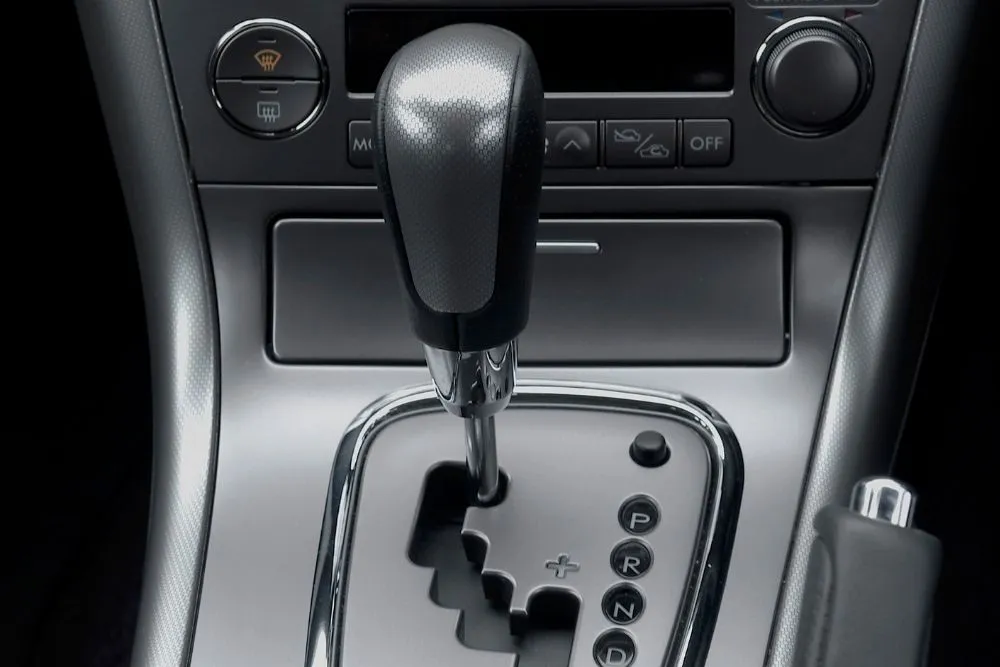
When was it invented?
The Tiptronic transmission was originally designed and coined by Porsche in the ’90s. It used to be a trade name only associated with Porsche and installed exclusively on cars with the Porsche brand, but now it is used for all car brands that have this type of transmission.
The original idea behind this transmission was to replicate the feeling of driving a racing car for normal, everyday cars, where you wouldn’t need the special skills that these racing cars with sequential manual transmissions required.
This Tiptronic transmission idea remained as one development with Porsche for quite some time. But in the early 2000s, this concept of automatic transmission mixed with an optional manual gear shift spread throughout the automotive industry.
Most auto manufacturers developed their own versions of the transmission, either with very similar design solutions or just using the basic principle of the Porsche Tiptronic.

Which cars use it?
The most notable car that uses a Tiptronic transmission is, of course, the Porsche as they were the first brand to develop and use this type of transmission. It is common to find other European cars with a Tiptronic transmission, particularly any of the cars in the Volkswagen group. This includes VW, Audi, Skoda, and Seat, as well as Porsche. Some Japanese cars also have this type of transmission.
Is it safe to use?
A Tiptronic transmission car will often have a rev limit to reduce the risk of you blowing a head gasket in case you forget to change gears, or you accidentally put it into the manual mode when you meant to stay in automatic.
This means that the car’s safety software will shift back to automatic mode and resume changing gears for you. As you won’t be able to rev your car’s engine excessively, it reduces the risk of you accidentally throwing your car into a drift. Ultimately, it is the same level of safety as either an automatic or a manual transmission car.
Why do other car brands have a similar type of transmission with a different name?
To be classed as a Tiptronic transmission, a car has to have the following features: an automatic gearbox, a hydromechanical shaftless design, electronic control, use of planetary gearsets, and torque converter should lock up in all gears. Other car manufacturers will put very similar functions in their cars, but if it doesn’t have those exact features then it cannot use the name.
Manufacturers will often come up with different names for the varied transmission, such as ‘Easytronic’ (Opel/Vauxhall), ‘Steptronic’ (BMW), and ‘Sequential Sports Shift’ (Ford – Australia).
How long does gear shifting take in a Tiptronic transmission vehicle?
Some drivers have previously commented that gear shifting is delayed in these types of vehicles, no matter what mode of transmission you are currently using at the time. The delays varied between 0.1 seconds to 0.7 seconds. However, the newer versions of these vehicles have eliminated this issue, and shifting is now completed with very little pause.
Similar Posts
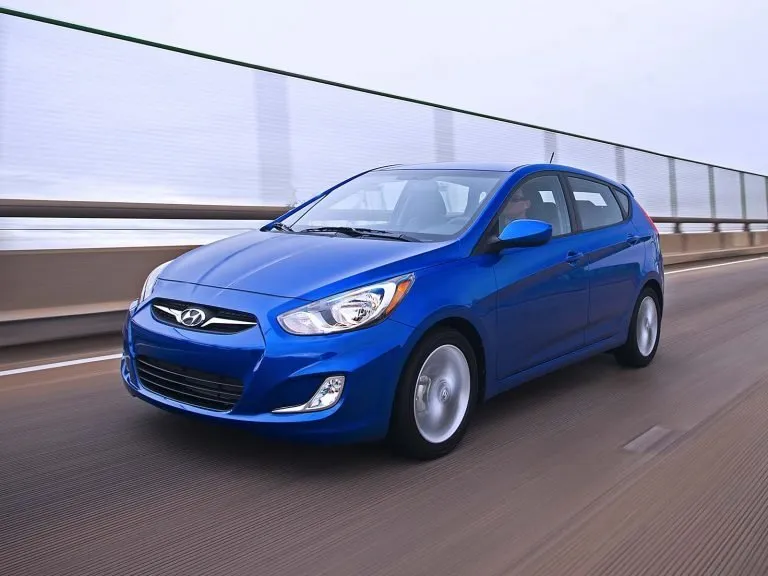
2014 Hyundai Accent Review – Inexpensive Little Hatch
There’s a lot to like about the 2014 Hyundai Accent. It’s stylish, efficient, and affordable – perfect for drivers on a budget. But what should you know before you buy one? In this comprehensive guide, we’ll go over everything from performance to features. So whether you’re considering buying an Accent or just want to learn…
The Stunning Porsche Miami Blue Color
The incredible Miami blue color from Porsche has been iconic in the world of cars, and even motor racing, for about 15 years. And unfortunately, it may look like it is coming to an end. At least that’s what the rumor mill has been saying for a while now. Is the Miami blue color coming…

2021 Nissan Rogue Interior – Luxurious and Practical (Detailed Review)
If there’s one thing that Nissan knows how to do, it’s make cars that are both practical and stylish. The 2021 Nissan Rogue interior is no exception. This vehicle is perfect for families or anyone who wants a little bit of luxury in their life. Plus, the interior is absolutely gorgeous! Keep reading to learn…
Powder Coating Exhaust Tips – What You Need To Know Before You Do
Powder coating your exhaust is a great move in many cases yet most people are simply afraid to make it, or, are entirely unaware of what it is and why you might want to do it. Powder coating gets a lot of bad press from people who don’t do the job properly and then burn…
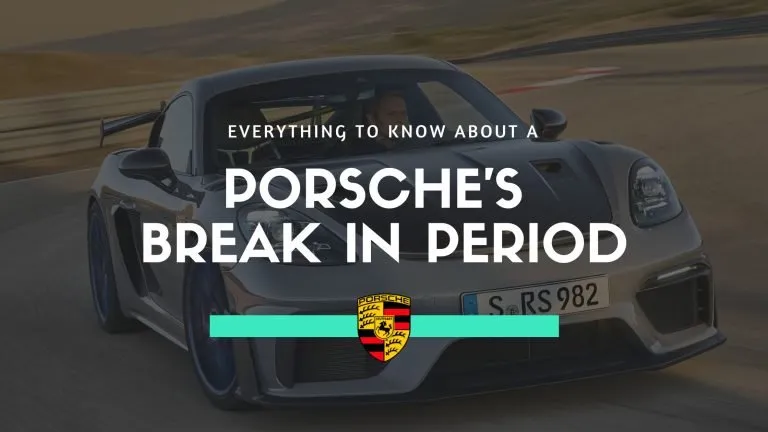
The Porsche Break In Period: Is It Important? (Explained)
The recommended break in period always tends to get Porsche owners up in arms. What a way to take all of the fun out of driving your brand-new Porsche, right? If you aren’t sure what a break in period is exactly, don’t worry, we’ve got your back. This blog post will cover what a Porsche…
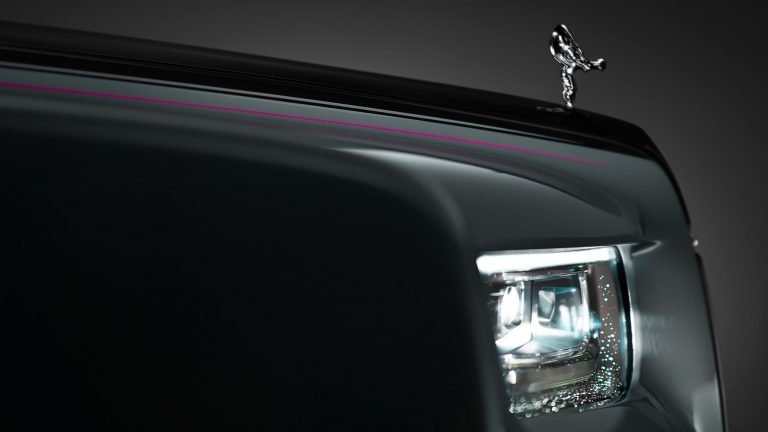
The Monumental Rolls Royce Hood Ornament – Everything You Need To Know (Detailed)
The name Rolls Royce has come to mean something built to perfection with no shortcuts or cost-saving measures to compromise the quality of the final build. As such, the name has become a generic term that extends far beyond the narrow confines of the motor industry. The expression “it is the Rolls Royce of…” is…
- Learn Online
- Automotive Mechanic
- Automotive Service Operations
- Automotive Parts and Warehousing
- Transportation Operations and Dispatching
- Auto Detailing
- Business Manager
- Automotive Sales and Leasing
- Automotive Service Technician
- Transportation Operations & Dispatching
- Automotive Service Advisor
- Automotive Technology
- Ozone Awareness Certification
- Auto Mechanic Careers
- Auto Mechanic Certification
- Auto Mechanic Jobs
- Auto Mechanic Salary
- Auto Mechanic Training
- Become an Auto Mechanic
- Dispatching & Transportation Operations
- Introductory Course On Hybrid And Electrical Mechanic
- Auto Body Estimating
- Auto Detailing Training
- Auto Parts & Warehousing
- Automotive Hybrid technology
- Automotive Service Consultant
- CFC Regulation Air Conditioning
- Auto Body Estimating in Vancouver
- Game Based Automotive Technology Training
- Refinishing Prep and Auto Body Technician
- Refinishing Prep Technician
- Air Conditioning
- Brake Systems & ABS
- Diesel Engine Operation, Service and Repair
- Dispatching & Transportation Operations Specialist Online Program
- Distance Auto Body Collision Technology & Estimating
- Distance Automotive Business Manager
- Distance Automotive Mechanics Technician
- Distance Transportation Safety Supervisor
- Electrical Advanced
- Electrical Fundamentals
- Engine Performance – Fuel Injection
- Engine Performance – Sensor and Ignition System
- F&I Course Objectives
- F&I Manager Careers
- Heavy Vehicle Systems (Basics and Advanced)
- Heavy Vehicle Systems (Specialist)
- Hybrid & Electric Vehicles
- Suspension Alignment
- Toronto, ON
- Cambridge, ON
- Montreal, QC
- Online Training
- Testimonials

How Does Tiptronic Transmission Work? 3 Facts for Future Auto Technicians

With as little as 2% of young Canadian drivers now learning to drive stick, automatic transmission is very much the standard for most Canadian cars. For those that can drive both, however, choosing what type of transmission to go for often comes down to a straight choice between convenience and performance. While automatics are easier to drive, stick shifts often offer better handling, control, and fuel efficiency.
But what if there was a way to get the best of both worlds? Tiptronic transmission systems allow drivers to enjoy the intuitive, computer-based gear shifting system of an automatic, while also allowing them to shift to a manual setting whenever they feel like experiencing a more controlled, sportscar style performance. While still mainly available as an option on high end luxury models, the system is becoming more popular, and auto mechanic students may well find themselves repairing more and more tiptronic cars as their careers progress.
Curious about how tiptronic transmissions work? Here’s what you should know.
1. The First Auto Manufacturer to Use Tiptronic Transmission was Porsche
While different forms of semi-automatic transmission systems have been around since the 1930s, the first tiptronic transmission debuted on the 1990 Porsche 911. The German automaker developed the system as a way to deliver an automatic version of their flagship car without compromising their reputation for outstanding performance.
Public response was overwhelmingly positive, and the company has continued to refine and improve its system over the years. Auto mechanic college students who know their sports cars might also be familiar with a number of other manufacturers’ variations on the tiptronic system, such as BMW’s Steptronic and Chrysler’s Auto/Stick.
2. Auto Technicians Will Find Tiptronic Systems Very Different from Regular Transmissions
Tiptronic transmissions are built to operate the same way as automatic systems, with the car’s onboard computer manually shifting gears. In order to engage the manual functions, the system will have either an additional gate within the gear lever or buttons mounted on the steering wheel.
When the manual mode is engaged, the driver overrides the computer and takes control of the gears themselves. This allows the driver to enjoy some of the benefits a stick shift system provides, such as the ability to up shift sooner while going uphill.
A tiptronic system will usually have safeguards in place to ensure drivers don’t go above the RPM red line and damage the engine, while the manual shifting function will also turn itself off after a certain period of inactivity.
3. Auto Technicians Know That Tiptronics Have Many of the Same Problems as Automatics
While tiptronic transmissions offer certain advantages over ordinary automatics, auto technicians soon learn that the system isn’t perfect. For one thing, a tiptronic transmission needs to have the same heavy components as an automatic, increasing the car’s curb weight and diminishing its performance.
The torque converter on tiptronic transmissions, which the driver uses to shift gears, also tends to be less responsive than a traditional clutch, while an ordinary manual system offers better fuel economy than most tiptronic vehicles.
Interested in auto mechanic training ?
Contact us to find out more about our courses!
- Auto mechanic college
- auto mechanic training
- Auto technicians
Did you know that ATC
is a proudly Canadian owned college with over 35 years of experience?
Start your new career!
Yes, I agree to receive messages about Automotive Training Centre. You may withdraw your consent to receive these messages at any time.
Form is submitting

What Is Audi Tiptronic
This automatic transmission is so practical that it even lets you select the gears. Depending on the Audi model, tiptronic has up to eight gears, allowing all gear changes to be made with the least amount of interruption to the power flow.
A geared automated transmission called tiptronic allows for spontaneous gear changes at any time.
The Dynamic Shift Program (DSP), which adjusts to the driver’s particular driving style, chooses the ideal shift point on its own. Tiptronic additionally enables the driver to make a manual adjustment in the automatic mode in a second shift gate. This enables, for example, downshifting to boost engine braking on a winding mountain route or adopting a substantially sportier driving style. In automatic mode, a sportier driving style is permitted with the added sport program with later shift points. All gear changes happen quickly and smoothly. The driving dynamics are improved by this.
In This Article...
Do all Audis come with Tiptronic?
Most Audi cars with the quattro all-wheel drive system come with the torque-converter automatic transmission known as the tiptronic. A dynamic shift program (or DSP) that learns how the car is driven and automatically adapts to situations and driving styles is included with all tiptronic gearboxes. There is a sport setting on the transmission that raises shift points and encourages more aggressive driving. Additionally, a tiptronic gate enables manual shifting using the gear selector or, if fitted, the tiptronic paddles on the steering wheel.
Are automatic and tiptronic the same thing?
A Tiptronic transmission is essentially a standard automatic transmission with the ability for the driver to switch out of “automatic mode” and make manual-style shifts using paddle shifters.
What about Tiptronic transmission?
Having a Tiptronic transmission technology has the advantage of allowing you to convert to manual mode when you need more control. You can manually change gear to enable a smoother, safer drive, for instance, when you need to ascend or descend a steep hill.
The majority of drivers also laud the Tiptronic transmission’s natural feel. Given that the paddles are placed behind the steering wheel, it has a layout that is comparable to that of many sports automobiles.
If drivers fail to employ manual shifting for a predetermined period of time when driving in manual, the Tiptronic system may turn itself back on. When this occurs, the Tiptronic software will start operating the gears automatically once more. If the driver wants to return to manual shifting, they must manually turn it on.
So, which transmission type should you pick? Your budget, the make and model of the car you drive, and the level of performance you desire all play a role in this.
Audi Tiptronic has two clutches, right?
The six- or seven-speed Audi S tronic dual-clutch transmission combines an automatic’s performance advantages with a manual gearbox’s dynamic handling. Depending on the driver’s option, gear changes can be accomplished quickly in full automatic mode or manually with shift paddles fitted to the steering wheel.
Tiptronic can it be changed while driving?
A query regarding using a modern automatic transmission with the manual option came from a reader. His query is as follows:
“Top Gear PH, hello! In an automatic vehicle, is it acceptable to switch from drive to manual (+/-) while I’m cruising? I’m hoping you can respond to my query. So excited! I’m grateful.”
There is nothing to worry about and you can. This is what these contemporary automatic transmissions with a manual mode are designed to do. It was designed to go from automated to manual mode, even while traveling at a high speed.
A few improvements to the automatic transmission have been made in the last ten years or so. Modern automatic transmissions now have a manual mode that allows the driver to manually shift gears, a feature that was first offered in exotic automobiles. However, unlike a true manual transmission, which uses a pedal to drive a hydraulic or cable-controlled clutch, modern manual transmissions just have switches or a shifter that needs to be tugged or pushed to change speeds.
With these gearboxes, the driver is free to choose a certain gear whenever they want. The ability to select one gear and maintain it gives the driver additional control in manual mode. The more control you have as a driver, the better.
Here are a few situations where using manual mode is beneficial:
How are Tiptronic gears operated?
Tiptronic transmissions are designed to function similarly to automatic gearboxes, with the onboard computer of the vehicle manually changing ratios. The system will either have a second gate inside the gear lever or buttons installed on the steering wheel to activate the manual operations.
When the manual mode is activated, the driver takes command of the actual gears rather than the computer. This enables the driver to take use of some of the advantages a stick shift system offers, such as the capacity to accelerate more quickly uphill.
In most cases, tiptronic systems have safeguards in place to prevent drivers from exceeding the RPM red line and damaging the engine, and the manual shifting function also automatically turns off after a predetermined amount of inactivity.
Does Tiptronic outperform DSG?
The outdated transmission with a torque converter is still Tiptronic. It shifts more quickly than a DSG in no circumstance, as far as I can tell. Even if it is only a matter of milliseconds, a torque converter-based transmission causes you to lose momentum, whereas a direct-shift transmission (DSG) simply transfers the vehicle’s momentum to the next gear with essentially no loss of momentum.
Performance-wise, a DSG transmission is superior. The Porsche PDK is comparable to the DSG. VW and a few other manufacturers have licenses to use Tiptronic, which Porsche owns. Still, it’s an automatic with torque conversion and manual shifting.
Why is Tiptronic flawed?
Transmission Tiptronic Hard changes from gear 1 to gear 2, irregular shifts from gear 3 to gear 4, and a shuddering torque converter are all issues with this transmission. By downloading the most recent software and according to the Volkswagen service bulletin, these can be fixed.
- Plan a Road Trip
- Plan a Flight
- Find an Airport
- Where to Stay
- All Questions
Road trip planner
Starting City
Destination City
Or switch to flying
Planning a road trip?
Get advice from people who have done the same trip.
The Trippy road trip planner automatically calculates the optimal itinerary including stops recommended by Trippy members, favorite restaurants and hotels, local attractions and things to do based on what people who live in the area have suggested, and more.
Once you have a quick trip planned, you can customize every detail, adding or removing stops, or changing what time you leave in the morning or how long you stay at each stop. Then you can save your custom trip and share it with friends and family.
Let us know if you have requests for more features you'd like to see in the trip planner!
MIA > Archive > Mandel
Ernest Mandel
De gaulle’s trip to moscow.
Source: From World Outlook , 29 July, 1966, Volume 4, No. 24, Paris and New York City Written: July, 1966 Translated: by World Outlook Transcrition & Marked-up: by David Walters for the Marxists’ Internet Archive 2009. Public Domain: Creative Commons Common Deed . You can freely copy, distribute and display this work; as well as make derivative and commercial works. Please credit “Marxists Internet Archive” as your source, include the url to this work, and note any of the transcribers, editors & proofreaders above.
[The following article has been translated from the July 9 issue of the Belgian left socialist weekly La Gauche.]
“As to alliances, we would think that they ought to be constructed ‘in three stages’: a Franco-Russian treaty procuring a first degree of security; the Anglo-Soviet pact and an agreement to be concluded between France and Great Britain constituting a second degree; the future pact of the United Nations, in which America would be a capital element, crowning the whole and serving as the ultimate recourse.” It was in these terms that Charles de Gaulle in December 1944, at the time of his first trip to Moscow, defined his concepts concerning European security, according to his Memoirs. (Volume III, p. 83, “Livre de Foche” edition.) Many things indicate that he has not changed his mind twenty-two years later. Wasn’t his second trip to Moscow designed to advance this concept?
Those with a more dour outlook will immediately object. The head of the Fifth Republic had something much more Machiavellian in mind. What he is aiming at is the predominance of France in Europe, or at least Western Europe if he is unable to extend it “from the Atlantic to the Urals.”
Since France doesn’t have the necessary economic weight, it must neutralize the drive of German industry through military superiority and diplomatic ruses. Hence it has two interests in common with the Kremlin—to block the Bundeswehr from getting nuclear arms and to break the American grip on “little Europe.” Thus the trip to Moscow was a power play against Washington and Bonn.
No doubt these analysts are right on the long-range aims of the general. But the nature of things is such that the designs of men—no Tatter how imbued with their own “grandeur”—are not at all sufficient to shape the destiny of the world. This is determined by the relationship among the big social forces. More than once in history, the diplomatic maneuvers of a power that was too weak have ended in serving the ‘big ones” despite the best intentions in the world. Didn’t this happen once again with the trip to Moscow?
Thus in the United States, the most cunning, like the servile tools of the (Johnson administration, carefully refrained from denouncing the general. “De Gaulle in Moscow served the United States despite the United States,” said some. ‘He worked for the whole West,’ others said approvingly. In Bonn, after weeks of glacial chill, the barometer of Franco-German relations again points to “fair weather.”
The truth is that de Gaulle, contrary to the groundless fears of some, did not betray his West German class brothers any more than he did his Polish class brothers at the time of his first trip.
In December 1944, Stalin dangled a “good, firm alliance,” real support against the Anglo-Saxons, in return for immediate recognition of the Lublin committee. But de Gaulle was not deceived. This would moan betraying a perhaps ‘democratic’ but certainly bourgeois Poland in behalf of a perhaps despotic but certainly noncapitalist Poland. And he did not want to take responsibility for an act contrary to “honor and honesty.” (Memoirs, Volume III, p sa.)
In June 1966, Brezhnev and Kosygin dangled an offer of just as real support against the United States, even genuine political leadership in Europe. In exchange they asked for recognition of the German Democratic Republic; that is, “of the two German states.” Be Gaulle brusquely replied that there could be no question of recognizing this “artificial construction. And with that rejoinder the serious conversation came to an end. The balance was nothing but decorations and fine talk.
Of course, the differences between Paris and Washington, between Fans and Bonn, are real in relation to the political future of our continent, its relations with the United States and the best strategy to follow to block the rise of the anti-imperialist and anticapitalist forces in the world.
Be Gaulle seeks a Europe freed largely from American supremacy. He seeks an Atlantic alliance on the basis of equality between North America and a Western Europe combined under his guidance. He favors a more supple policy, with regard to the USSR, which in his opinion should be definitively separated from China and the “extremists” among the revolutionists of the Third World, through some indispensable concessions.
He holds that it is necessary to “relax” the tensions to be able to resolve the questions in dispute, such as the reunification of Germany, while the Americans and the Germans of Bonn maintain that without this reunification no real relaxation is possible in Europe. But at bottom, they all defend a common cause—the cause of Big Capital. They all seek to hold back the enemy—socialism and the peoples of the Third World who are rising and seeking to break out of the capitalist world market. They all seek refuge under the “nuclear umbrella” of the Pentagon, without which they cannot counterbalance Soviet military power on the European continent (if anything confirms this, it is the explosion of the ridiculous French nuclear device in Polynesia which amounts to nothing in face of the power of the USSR). The means may differ, the aim is the same.
In this respect the Soviet Union represents something else again. The means are perhaps the same, but the aim is entirely different. Thus treaties on mutual consultation can be concluded—even by means of a direct telephone line!—treaties on technical cooperation, or whatever cultural and commercial exchanges are desired; the fundamental opposition between the interests of the French bourgeoisie and the Soviet leaders will by no means make it possible to form a genuine alliance in the present world context.
The Soviet leaders are aware of the weakness of the present Communist parties in Western Europe (for which they are in part responsible). They are aware of the temporary stabilization of caitalism in this part of the world (which they largely contributed to). From this they draw the conclusion that it is necessary to return to a policy that seeks to ‘exploit the interimperialist contradictions,” as before the second world war. They commit an error in believing that de Gaulle is ready to follow them into a têtei-tête, when he seeks in reality only to increase his power and prestige within the Atlantic Alliance
The French Communist leaders would obviously make a still greater error in concluding that the time has come for an ‘agonizing revision” of their political orientation in France, as in 1935 or 1944.
It is true that the policy of the USSR places them before a cruel dilemma; they no longer know if they should applaud or complain when the Soviet crowds cheer the person who remains, until proved otherwise, the fiercest and most dangerous class enemy of the French workers. If they oppose him, they are tempted to make an alliance with de Gaulle’s pro-American adversaries like Nollet and Nitterrand—and then the capitals of Eastern Europe are not very contented. And if they approve, what remains of their role as an opposition in France? There remains the socialist perspective which stands in complete opposition to the politics of de Gaulle; but the leaders of the French Communist party do not think this is any more “realistic’ than do the Social Democratic leaders of the SF10, or even the technocratic ideologists of neocapitalism.
That will the practical results of the trip amount to? The American Newsweek summarized the situation as follows: “At least he will have succeeded in engaging the Russians in a new diplomatic dialogue with the West.” That puts it in a nutshell. At a time when the intensification of the American aggression against the Vietnamese people makes a public dialogue between Moscow and Washington more difficult, de Gaulle is playing, objectively, the role of go-between for the Atlantic Alliance as a whole Thanks to him, the head of one of the capitalist states in this alliance has been acclaimed by crowds in the Soviet Union. For the first time in many years they have been shown a face of capitalism which their own leaders now say is benevolent, attractive, peaceful, full of good intentions toward the peoples of the world.
Pravda in connection with this trip, talks about an ‘irreversible process.” Let them beware of certain processes, which while still reversible, bode nothing good for the USSR. By attending mass in Leningrad, de Gaulle, like a good politician, was already prepa:ing for his coming trip to Poland. Rumania, ceaselessly increasing its trade with the West, already told the Russians in Bucharest that it would like to see the Warsaw pact modified just as de Gaulle wants to modify NATO. Decidely, if things are in movement, thanks not a little to the general, not everything is stirring in favor of socialism and not everything is stirring against the interests of American imperialism.
Back to the Ernest Mandel Internet Archive
Last updated on 7 February 2009
Trans-Siberian Railway Prices
- Trans-Siberian Railway Tickets
- Trans-Siberian Railway Ticket Booking
- Trans-Siberian Railway Car Classes
- Travel Procedure
- Trans-Siberian Railway Route
- Guides & Gadgets

Home » Prices and Trans-Siberian Tickets » Trans-Siberian Railway Prices
Ticket prices for the Trans-Siberian Railway also depend on the current ruble exchange rate.
Is the Trans-Siberian Railway expensive?
Before starting on your Trans-Siberian Railway adventure you naturally want to know what the entire trip will cost. Although this sounds like a simple question, it is pretty difficult to answer. The Trans-Siberian Railway price of travel depends on the following factors:
- Which travel class do I want to use? The price for a first class ticket is about three times the price of a 3rd class ticket
- Am I willing to buy the tickets myself and assume responsibility for the organisation of the trip?
- How many stopovers do I want to make? The more breaks, the higher the total price.
- What sort of accommodation do I want? Will it be a luxury hotel or will a hostel dormitory be sufficient?
- What tours and excursions would I like to go on?
- What is the current exchange rate for rubles?
Basically, everything from a luxury to a budget holiday is available. If you buy yourself a 3rd Class nonstop ticket at the counter, a few hundred Euros will cover the price. All you will experience is a week on the Trans-Siberian train and will see nothing of the cities on the way. There is, however, any amount of room for upward expansion. Everyone makes different choices about which aspects they are willing to spend money on. I personally prefer to save money on accommodation and railcar class, visit as many cities and do as many trips as possible. To enable better classification of your travel expenses I have contrasted two typical traveler types. In the third column you can calculate the total cost of your own journey on the Trans-Siberian Railway. Please keep in mind that these are only rough estimations and not exact prices.
The all-in costs seem fairly high at first. However, they cover everything and it is quite a long journey taking four weeks. Many people forget to consider that when looking at the list. We should also deduct the running costs for food and leisure at home. I think most visitors to this page will classify themselves somewhere between the two categories, that is around the € 2,000 – € 2,500 range. When comparing these prices with other travel packages, you get the impression that it is hardly worthwhile travelling individually on the Trans-Siberian Railway. Please keep in mind that most packages last no more than 14 days and you are herded like cattle through the most beautiful locations.
If you spend less time on the Trans-Siberian Railway you will, of course, pay less. I chose this particular travel length because I prefer not to do things by halves. If you fulfill your dream of travelling on the Trans-Siberian Railway, enjoy it and don’t rush things. But it’s up to you, of course. Try playing around with the form a bit to find the appropriate price for your trip.
- Trans-Siberian Railway Tickets »

IMAGES
COMMENTS
Tiptronic S is a modernized Tiptronic technology, which has the capacity to adjust to the driver's driving style and allows driver to shift gears without switching to the manual mode. This solution was introduced in 2000 for the Porsche Boxster. In the Porsche Cayenne, the Tiptronic S was upgraded to six-speed.
Put simply, a tiptronic gearbox is a special kind of automatic transmission that also has the ability to allow the driver the option to shift gears manually if they would like. It is designed as a gearbox to give drivers more control over their on-road experience. Many drivers like the tiptronic gearbox especially when negotiating uphill and ...
The Tiptronic option continued with the 993, 996, and 997.1 as well as the 986 and 987.1 Boxster models. In 2009, Porsche debuted the PDK transmission in the 987.2 Boxster/Cayman and 997.2 911, and it became the only automatic transmission option for the two-door sports car models.
Tiptronic is a special solution for all driving situations as a result. The automatic transmission with the Tiptronic function will easily handle the chore of overtaking a car. In the past, the manual transmission was a preferable option for these uses because it was impossible to shift into the highest gear instantaneously with normal ...
Tiptronic is a type of discrete automatic transmission developed by Porsche and used in its vehicles and those of its licensees. A Tiptronic transmission can operate just as the common type of automatic transmission, but it also allows the driver to override the automatic mode by moving the shift lever into a second (Tiptronic) shift gate equipped with two spring-loaded positions: "upshift ...
In this video I show you how to use the tiptronic mode on an automatic transmission. This is how you do it:Put the vehicle in drive. When you begin to accele...
Tiptronic debuted in a model that was already marking a generational shift for the 911 - the 964. HISTORY AND TECH. Described as 'revolutionary' by Porsche at the time, the Tiptronic gearbox first introduced in 1988 was a four-speed electro-hydraulically controlled unit that was developed in conjunction with ZF and Bosch.
A Tiptronic transmission works in an opposite style, adopting manual characteristics to an automatic gearbox by allowing the driver to select gears manually, overriding the computer that controls normal shifting and using a torque converter instead of a clutch. The Tiptronic name originated as a trademark name for a manual-shifting automatic ...
A 968 equipped with PDK was nearly readied for sale before ZF's Tiptronic was called in to pinch hit, and a stillborn successor to the 959 (dubbed 969) with PDK was killed a year before going on ...
Tiptronic is only available in the Cayenne lineup, which includes the incredibly sporty Cayenne Turbo GT, when looking for new Porsches. The Panamera is the only Porsche with an automatic transmission option other than PDK. The Tiptronic originally made an appearance on the 964 in 1991, subsequently on the 968, according to the used car market.
Step 4. To change into a higher gear, accelerate normally while moving the gear selector ahead in the Tiptronic gate. Pull the selector down to the "D" setting, "S" setting, or slide it into the Tiptronic gate by pressing the button on the gear selector level (central console). The display for the instrument cluster will show "D ...
The Manual Mode - It allows the driver to take control of the transmission, of the shifting of gears to be precise. There are steering-mounted pedals or a gear knob to make the switching of modes. When you use it, the internal transmission actuators change the gear to either upshift or downshift position. Internal mechanism of a Tiptronic shift.
Tiptronic transmission, also known as 'manumatic' transmission, is the perfect balance between manual and automatic transmission gear systems in vehicles. It basically is an automatic gearbox with the ability to manually change gears. Commonly, the gear stick can be moved through a series of + and - signs, denoting each setting.
Tiptronic is essentially a type of automatic transmission car that has a manual gear-shifting mode. This means it is a car that has developed into a dual transmission system - where the car is naturally supposed to be an automatic transmission, but the driver has the option to shift the gears manually. It does this with a gear lever behind ...
Tiptronic has a built-in protective function that prevents damage to the engine and gearbox. When the power unit reaches a critical speed, or the driver is inactive for a long time, the onboard computer switches on the automatic mode. What is tiptronic in cars: main and distinctive features. automatic gearbox; hydromechanical shaftless design;
The S-tronic is a 7-speed dual clutch transmission, and in Audi/VW speak, it is referred to as a Direct-Shift gearbox or DSG. This is an automatic transmission that foregoes the traditional torque converter in favor for two clutch packs. It is effectively two transmissions in one case, as the first clutch is for gears 1, 3, 5 and 7, and the ...
The Tiptronic transmission is considered by many to be the pinnacle of conventional automatic transmission development. The advanced computer software is able to detect the driving situation and alter its shift points, while even allowing engine braking similar to that of a manual transmission. If the driver is feeling sporty, the shift lever ...
Tiptronic transmissions are built to operate the same way as automatic systems, with the car's onboard computer manually shifting gears. In order to engage the manual functions, the system will have either an additional gate within the gear lever or buttons mounted on the steering wheel. When the manual mode is engaged, the driver overrides ...
Again, this is for CVT, DSG or Manual and NOT Tiptronic ! phil. Makes more sense now....but totally agree there's no way ATF is lifetime no matter what transmission it is. 03-10-2011 04:53 AM #39. swsherif. View Profile View Forum Posts View Blog Entries View Articles Active Member Two Rings. Join Date Sep 01 2009 AZ Member # 47164 ...
New 2024 Audi Q3 Premium Plus 45 TFSI S line quattro Tiptronic for sale in Frederick, MD. This new Audi car is priced at $42475 and available for a test drive at Ourisman Motors of Frederick Inc.
A geared automated transmission called tiptronic allows for spontaneous gear changes at any time. The Dynamic Shift Program (DSP), which adjusts to the driver's particular driving style, chooses the ideal shift point on its own. Tiptronic additionally enables the driver to make a manual adjustment in the automatic mode in a second shift gate.
The Trippy road trip planner automatically calculates the optimal itinerary including stops recommended by Trippy members, favorite restaurants and hotels, local attractions and things to do based on what people who live in the area have suggested, and more. Once you have a quick trip planned, you can customize every detail, adding or removing ...
It was in these terms that Charles de Gaulle in December 1944, at the time of his first trip to Moscow, defined his concepts concerning European security, according to his Memoirs. (Volume III, p. 83, "Livre de Foche" edition.) Many things indicate that he has not changed his mind twenty-two years later.
Public transport: ~30€. Taxi: ~50€. Inexpensive Restaurants: ~20€ * 28 days = 560€. Total price: 640€. please choose Taxi only (~100€) Taxi / public transport (~80€) public transport only (~50€) please choose Top Restaurants (~40€ / day) Inexpensive Restaurants (~20€ / day) Self Cooking (~5€ / day)